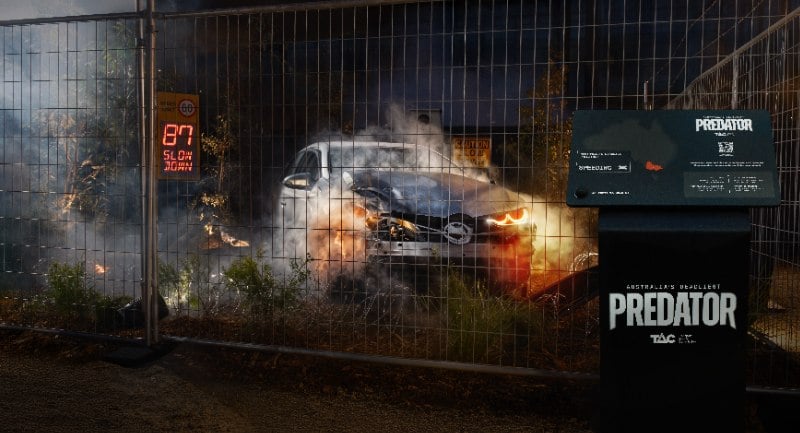Transport Accident Commission (TAC) has unveiled a striking new campaign developed with Thinkerbell, designed to shift how Australians perceive road safety risks—particularly speeding.
Titled Australia’s Deadliest Predator, the initiative uses behavioural science and public exhibition to draw an uncomfortable but necessary comparison: speeding cars kill more Australians each year than any native animal.
At the centre of the campaign is a large-scale public installation in Melbourne’s CBD, outside the Melbourne Museum (20–24 August), resembling a zoo enclosure. But instead of a fearsome animal, visitors encounter the wreckage of a speed-related car crash. The message: the nation’s most dangerous predator isn’t a snake or a shark, it’s a car exceeding the speed limit.
“We are showing up differently to connect Victorians to the real dangers of speeding and challenge the relaxed mentality that ‘just a little bit over the limit’ is OK.” said Jacqui Sampson, TAC Head of Community.
Accompanying the exhibit is an immersive audio experience, accessible on-site or through personal devices, designed to walk listeners through how even minor increases in speed can have deadly consequences.
Between 2001 and 2021, an average of six Australians died annually due to dangerous wildlife. By contrast, speeding has claimed over 4,100 lives in the past decade, more than 400 every year.
However, TAC research revealed a disconnect: while nearly 75 per cent of Australians fear snakes, only 11 per cent consider driving 5 km/h over the speed limit to be extremely dangerous.
Tom Wenborn, Chief Creative at Thinkerbell, said the campaign aims to disrupt that misperception. “People panic about snakes and sharks, yet shrug at doing 10km/h over. From exhibit to earbud to screen, it’s a multi-sensory intervention against complacency.”
Adam Ferrier, psychologist and Chief Thinker at Thinkerbell, explained the behavioural science behind the creative: “Humans are hardwired to fear vivid threats— like sharks, snakes or crocodiles — crocodiles—because our brains evolved to react to immediate and vivid dangers. But when it comes to everyday risks like speeding cars, we tend to underestimate the danger. We need to make the invisible visible—so Australians can start seeing speeding not just as a statistic, but as the country’s deadliest predator.”
Credits
Creative agency: Thinkerbell
Client: TAC
Activation Production: Graffiti
Audio Production: Eardrum
Film Production: Thinkerbell

